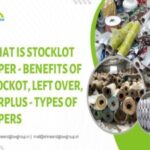In this article, we’ll embark on a journey through the world of recycling and reusing plastic and paper materials, shedding light on the importance of these practices and how they can collaboratively contribute to a more sustainable and environmentally conscious future.

The Environmental Dilemma
The Impact of Plastic Pollution
Plastic pollution is a global crisis, affecting marine life, ecosystems, and even human health. Recycling and reusing plastic materials are essential steps in mitigating this issue.
The Role of Paper
Paper production can lead to deforestation and the degradation of natural habitats. By recycling and reusing paper, we can reduce the demand for fresh wood pulp.
Recycling Plastic
Types of Plastic
Plastic comes in various forms, each with its own recycling challenges. Common plastics include PET, HDPE, PVC, and LDPE, among others.
Collection and Sorting
Recycling plastic begins with collecting and sorting different types of plastics to ensure they are processed correctly.
Reprocessing
Once sorted, plastics are cleaned, melted, and reprocessed to create new plastic products.
Reusing Plastic
Reducing Single-Use Plastics
By reusing plastic containers, bags, and bottles, we can reduce the consumption of disposable plastics that often end up in landfills and oceans.
Creative Upcycling
Get imaginative with plastic items like bottles, turning them into planters or bird feeders. Upcycling is a fun and sustainable way to give new life to old plastic.
Recycling Paper
Paper Collection
Collecting paper waste, including newspapers, cardboard, and office paper, is the initial step in the recycling process.
De-inking and Processing
The collected paper undergoes de-inking and processing, which removes ink and contaminants, leaving clean paper fibers.
Creating New Paper
The processed paper is then used to create new paper products, closing the loop on paper recycling.
Reusing Paper
Crafting and Art
Reusing paper for DIY crafts, artwork, and creative projects is a sustainable way to give new purpose to old paper materials.
Homemade Stationery
Transform discarded paper into personalized stationery, notebooks, and greeting cards. This is a delightful and eco-friendly way to reuse paper.
Environmental Benefits
Reducing Pollution
Recycling and reusing plastics and paper minimize pollution, as they reduce the need for manufacturing from raw materials and lower energy and water consumption.
Conserving Resources
These practices help conserve vital resources, such as forests (in the case of paper) and fossil fuels (in the case of plastics).
Lower Carbon Footprint
Recycling and reusing materials contribute to a significant reduction in carbon emissions, helping combat climate change.
Practical Steps
At Home
Begin recycling plastic and paper at home by setting up separate bins for each material. Get acquainted with your local recycling regulations.
In the Community
Participate in community clean-up events, recycling drives, and education programs to raise awareness and encourage responsible disposal.
Supporting Sustainable Brands
Choose products from companies dedicated to sustainable packaging and materials, promoting a circular economy.
Conclusion
In summary, recycling and reusing plastic and paper are fundamental practices in building a more sustainable and environmentally conscious society. By taking small steps in our daily lives, we can collectively make a significant difference and protect our planet for future generations.
There are some websites / market place works on buying and selling of scrap you can visit it app.scrapc.com
Shine and Glow Group is continuously working on importing and exporting goods which can get reuse and recycling – one more cycle to waste. click the link. www.shineandglowgroup.in
FAQs
- What are the environmental impacts of plastic pollution? Plastic pollution harms marine life, disrupts ecosystems, and poses health risks to humans. Recycling and reusing plastic can help mitigate these issues.
- How can I identify different types of plastic for recycling? Look for the recycling symbol on plastic items, usually accompanied by a number (e.g., PET or HDPE), indicating the type of plastic.
- Are there any limitations to recycling and reusing paper and plastic? It’s essential to ensure paper is clean and uncontaminated, while plastics should be free of food residue. These factors can impact the recycling and reusing processes.
- What are some creative ways to reuse plastic and paper? Creative upcycling and crafting projects, as well as making homemade stationery and artwork, are excellent ways to reuse these materials.
- How can businesses contribute to recycling and reusing efforts? Businesses can implement sustainable packaging and waste reduction strategies, as well as encourage recycling and reusing practices among employees and customers.



